#touchless technologies
Explore tagged Tumblr posts
Text
Adapting to Change | How a Construction Cost Estimating Service Reflects Post-Pandemic Architecture Trends
Introduction
The COVID-19 pandemic dramatically reshaped the world in many ways, and architecture and construction were no exception. As businesses, governments, and individuals adjusted to a new reality, architectural trends shifted to reflect the changing needs and priorities. The rise of remote work, health and wellness concerns, and sustainability considerations all influence post-pandemic architecture. For construction professionals, accurately predicting the costs associated with these evolving trends requires expertise and an adaptive approach. A construction cost estimating service plays a crucial role in translating these new architectural trends into budget forecasts that ensure projects align with both contemporary demands and financial realities.
Health and Wellness in Architecture
The post-pandemic world has heightened awareness around health, safety, and wellness, influencing design priorities in both residential and commercial buildings. Features such as improved ventilation, touchless systems, enhanced cleaning protocols, and biophilic design are now at the forefront of architectural planning. Incorporating these features requires more thoughtful material selection, specialized systems, and layout adjustments—all of which affect the overall cost.
A construction cost estimating service helps by:
Calculating costs for enhanced HVAC systems: Modern ventilation systems that improve air quality are now considered a necessity in many buildings. Estimators evaluate the costs of high-performance HVAC systems, including filtration and UV systems to sanitize the air.
Incorporating biophilic design features: The integration of natural elements like indoor plants, green walls, or natural lighting can increase construction costs. Estimators forecast the costs of implementing these sustainable design features, which enhance the occupant's health and well-being.
Factoring in touchless and smart systems: The demand for touchless technologies in elevators, faucets, doors, and lighting has surged. These systems can significantly impact the budget, and estimators need to evaluate both installation and long-term maintenance costs.
Flexibility and Adaptability in Building Design
The pandemic has shown that flexibility in design is more critical than ever. The future of work is likely to involve a hybrid model, with employees spending time both in the office and at home. As a result, buildings must be adaptable, with spaces that can be easily reconfigured to accommodate changing needs. This adaptability requires careful consideration of layout, movable walls, and multipurpose rooms.
A construction cost estimating service assists by:
Assessing costs for modular and flexible construction systems: The use of modular systems that allow for easy reconfiguration of interior spaces can be more expensive upfront, but they offer long-term flexibility. Estimators calculate the initial and potential long-term costs of these systems.
Evaluating the expense of adaptable spaces: Offices that can easily transform into collaborative spaces or quiet zones for remote work require specialized designs and finishes. Cost estimators provide insights into how these flexible spaces impact the overall budget.
Factoring in future-proofing elements: Buildings that are designed to adapt to new technology, office layouts, or residential trends require investments in infrastructure such as extra power outlets, robust Wi-Fi networks, and data cabling. Estimators calculate these future-proofing costs into the initial budget.
Sustainability and Environmental Considerations
The pandemic has increased focus on sustainability, with more individuals and businesses prioritizing environmental impact and energy efficiency. In the post-pandemic era, green building practices are no longer a luxury but an expectation. From net-zero energy buildings to the use of sustainable materials, the integration of sustainability into architecture affects the overall cost structure.
A construction cost estimating service can support these efforts by:
Estimating costs for energy-efficient technologies: Solar panels, energy-efficient windows, green roofs, and sustainable insulation are in high demand as part of eco-conscious building practices. Estimators ensure that the integration of these technologies is adequately budgeted.
Accounting for green certification processes: Many buildings aim to achieve certifications such as LEED or BREEAM. The requirements for these certifications may increase both direct costs and timeframes. Estimators factor these additional requirements into the budget.
Evaluating lifecycle cost benefits: While sustainable materials and energy-efficient designs may increase upfront costs, they often provide long-term savings through lower operational expenses. Estimators incorporate these lifecycle savings into the cost estimate, demonstrating both the immediate investment and the long-term financial benefits.
Changes in Residential Design
The pandemic has also affected the way residential spaces are designed. As more people worked and studied from home, the demand for dedicated home offices, larger living spaces, and outdoor areas increased. Homeowners are seeking spaces that enhance their quality of life and provide greater comfort, privacy, and connection to the outdoors.
A construction cost estimating service helps by:
Estimating the costs for home office and study spaces: Dedicated home offices or study spaces require additional design considerations such as soundproofing, technology integration, and proper lighting. Estimators calculate the costs associated with creating these spaces.
Factoring in outdoor living spaces: Outdoor areas such as patios, gardens, and outdoor kitchens have become essential. Estimators evaluate the costs of landscaping, outdoor furniture, and specialized features like fire pits, ensuring that the outdoor living space is fully integrated into the budget.
Evaluating the impact of larger floorplans: As more people seek larger homes to accommodate home offices and extended family, the costs of materials and labor can increase. Estimators adjust the budget based on changes in square footage and layout.
Conclusion
The post-pandemic era has brought about a new wave of architectural trends focused on health, flexibility, sustainability, and comfort. As architects and builders embrace these trends, construction cost estimating services play a crucial role in ensuring that projects meet both the design requirements and the budget constraints. From advanced HVAC systems to sustainable building materials and adaptable layouts, accurate cost estimations are key to successfully implementing these changes. As the world continues to adapt, construction professionals must remain agile and responsive to the evolving needs of the built environment, ensuring that both current and future construction projects reflect the demands of a post-pandemic society.
#post-pandemic architecture#flexible design#health-conscious buildings#construction estimating service#biophilic design#HVAC system costs#sustainable materials#energy-efficient buildings#hybrid workspaces#modular construction#smart buildings#net-zero buildings#green certifications#home office designs#outdoor living spaces#adaptable buildings#post-COVID office spaces#pandemic architecture trends#touchless technologies#remote work design#smart home features#circular building practices#building flexibility costs#construction cost forecasting#building sustainability#energy-saving construction#design for adaptability#building future-proofing#wellness-oriented construction#workplace design changes
0 notes
Text
INNORKOM Dental Unit, Create new standard of dental comfort Buffering System,Comfortable Experience Metal Backrest, Easy to Remove Soft Light Multilight colors selection Equipped with infrared touchless control,effectively reduces the risk of contamination 🌐https://www.innorkommedical.com/ 👉 Follow INNORKOM to and DM us to learn more
Dental Comfort #Medical Innovation #INNORKOM #Dental Unit #Healthcare Excellence #Touchless Technology #Modern Dentistry #Dental Care
#Dental Comfort#Medical Innovation#INNORKOM#Dental Unit#Healthcare Excellence#Touchless Technology#Modern Dentistry#Dental Care
0 notes
Text
Touchless Car Wash Guide 2025: Tips & Expert Insights for Shine

Touchless car wash systems are revolutionizing the way we maintain our vehicles, providing a convenient and effective solution for the modern driver. In an era where time is of the essence, these automated washing systems stand out by delivering superior cleaning without the risk of scratches or damage to your car’s finish. This ultimate guide will explore the latest tips and techniques for utilizing touchless car washes in 2025, ensuring your vehicle not only looks fantastic but is also protected from harmful contaminants. By understanding the mechanics behind touchless car wash technology and implementing best practices, you can elevate your car care routine to new heights. Join us as we delve into the essentials of touchless washes, revealing how they can save you time while keeping your vehicle in pristine condition.
Key Takeaways
- Understanding the Process: A touchless car wash uses high-pressure water jets and specialized cleaning solutions to safely wash your vehicle without any physical contact, reducing the risk of scratches and swirls. - Choosing the Right Facility: When selecting a touchless car wash, consider factors such as equipment quality, product offerings, and customer reviews to ensure you receive a superior cleaning experience tailored to your vehicles needs. - Pre-Treatment Benefits: Many touchless car wash systems offer pre-treatment solutions that target specific contaminants like road grime and bug splatter, enhancing the overall cleaning process and effectiveness. - Maintenance Matters: Regular visits to a touchless car wash can help maintain your vehicle’s exterior, protecting the paint and finish from environmental damage and prolonging the life of your car’s appearance. - Post-Wash Care: To maximize the results of a touchless car wash, consider applying a protective sealant or wax after washing, which can shield your vehicle from dirt and enhance its shine for a longer-lasting effect.
1. Understanding the Touchless Car Wash Process
A touchless car wash offers a convenient alternative to traditional car cleaning methods, effectively eliminating the risk of scratches from brushes and cloths. However, many car owners face challenges, such as the effectiveness of cleaning agents and the need for high-pressure systems to remove stubborn grime. Additionally, users may question the safety of these systems on various materials and finishes. To address these concerns, modern touchless car washes utilize advanced technology, including high-powered water jets and specialized detergent formulas that adhere to automotive surfaces without physical contact. An example is the use of foam-based cleaners that lift dirt and debris, enhancing the cleaning action of water. In implementing a touchless car wash, it’s essential to assess the equipment carefully and ensure it is maintained regularly, providing optimal performance and customer satisfaction. Understanding these methods can lead to a more effective, safer car cleaning experience. 1.1 Benefits of a Touchless Car Wash for Vehicle Maintenance A touchless car wash offers numerous advantages that significantly contribute to the overall maintenance of your vehicle. Unlike traditional car washes, touchless systems rely on high-pressure water jets and specialized detergents to remove dirt and grime without physically contacting the cars surface. This method minimizes the risk of scratches and swirls caused by brushes and cloths. For instance, utilizing a touchless car wash can be especially beneficial for owners of luxury vehicles or cars with delicate paint finishes, as it preserves the integrity of the vehicles exterior. Furthermore, many touchless car wash facilities incorporate advanced technologies, such as spot-free rinse options and wax applications, enhancing the vehicles shine and protection. Regularly using a touchless car wash not only maintains the cars appearance but also extends its lifespan by preventing corrosive build-up over time. 1.2 Advantages of Using a Touchless Car Wash A touchless car wash offers several notable advantages compared to traditional car cleaning methods. One significant benefit is the reduction of potential damage to the vehicle’s surface. While traditional washes often use brushes that can harbor dirt and debris, a touchless system employs high-pressure water and specialized detergents to effectively remove grime without direct contact. For instance, many modern touchless systems utilize advanced foam applications that cling to surfaces and break down contaminants before rinsing, ensuring a thorough clean. Additionally, touchless car washes can be more environmentally friendly. They typically use less water than their mechanical counterparts and incorporate biodegradable chemicals, making them a sustainable choice for conscientious car owners. As such, for individuals who prioritize both vehicle care and environmental impact, the touchless car wash emerges as a compelling option, safeguarding not just their cars but also the ecosystem.
2. Understanding the Touchless Car Wash Advantage
The demand for a convenient and effective vehicle cleaning solution has led to the rise of the touchless car wash system. This method, while innovative, presents several challenges, including concerns about cleaning efficacy, surface protection, and cost. As potential users consider these aspects, its essential to weigh the effectiveness and safety of touchless systems against traditional wash options. Problems such as inadequate dirt removal and chemical exposure also factor into decisions. Aspect Touchless Car Wash Traditional Car Wash Contact with Vehicle No physical contact Brushes and sponges used Cleaning Effectiveness Safe for delicate surfaces, but may miss tough grime Thorough dirt removal, potential surface scratches Water Usage Typically lower Higher, depending on wash type Cost Generally more expensive per wash Varies widely based on service level Time Efficiency Quicker drying time Longer drying due to physical contact To effectively implement a touchless car wash system, users should focus on selection criteria like location, wash quality, and chemical safety. Integrating these elements will enhance user experience and vehicle care. Emphasizing proper maintenance routines, such as regular washes and additional treatments, can further optimize results. By understanding these factors, car owners can confidently choose a touchless car wash that meets their needs and ensures their vehicle stays gleaming. 2.1 Benefits of Using a Touchless Car Wash A touchless car wash offers several key advantages that enhance the car cleaning experience while minimizing potential damage. Unlike traditional car washes that utilize brushes, a touchless system relies on high-pressure water jets and specially formulated cleaning solutions. This method significantly reduces the risk of minor scratches or paint damage, making it ideal for maintaining the integrity of a vehicle’s finish. For instance, car owners with high-end paint jobs or delicate decals often prefer touchless washes to preserve their investment. Additionally, touchless systems are typically more efficient in removing dirt, grime, and even tough contaminants like bird droppings and tree sap through the use of advanced chemical formulations. Many automated facilities now offer options such as waxing and undercarriage cleaning, further enhancing the cars protection against environmental factors. Overall, a touchless car wash represents a blend of convenience and vehicle care, catering to the modern driver’s needs. 2.2 The Environmental Benefits of a Touchless Car Wash A touchless car wash utilizes high-pressure water jets and specialized detergents that effectively clean vehicles without the need for brushes or sponges. This significantly reduces the risk of scratches and swirl marks on the paintwork, maintaining the cars aesthetic appeal. One of the standout features of a touchless system is its water conservation capabilities. Traditional car washes can use up to 100 gallons of water per wash, whereas a touchless system typically requires only 20 to 30 gallons. This not only conserves water but also minimizes runoff and pollution associated with car cleaning products. Moreover, many touchless car washes employ eco-friendly cleaning agents that are biodegradable and less harmful to the environment. The integration of such products means fewer harsh chemicals entering our waterways, contributing to better ecosystem health. As awareness of environmental issues grows, many consumers are opting for touchless car washes as a sustainable choice for maintaining their vehicles. >A touchless car wash not only protects your cars finish but also offers a sustainable solution to car cleaning, making it an intelligent choice for environmentally-conscious drivers.
3. Understanding Touchless Car Wash Solutions
As car owners increasingly seek convenience and efficiency, the touchless car wash system emerges as a popular alternative to traditional washing methods. However, many consumers face challenges, such as potential residue left on the vehicle or concerns about the effectiveness in tackling stubborn grime. Understanding these core concepts is crucial for making informed choices. To address these issues, modern technology has significantly improved touchless car wash systems. Utilizing high-pressure water jets combined with specialized cleaning agents, these systems can effectively remove dirt without physical contact. For example, ultrasonic sensors can detect surface types, adjusting the wash accordingly for optimal results. Adopting best practices, such as pre-rinsing with a dedicated spot for heavy soil areas, can enhance performance. Ultimately, a well-executed touchless car wash not only preserves your vehicle’s finish but also provides a quick and eco-friendly cleaning solution for today’s busy lifestyle. 3.1 The Environmental Benefits of Touchless Car Wash Systems A touchless car wash offers significant environmental advantages compared to traditional methods. By relying on advanced technologies, such as high-pressure water jets and environmentally friendly soaps, it minimizes the volume of water used per wash. For instance, many touchless systems consume less than 15 gallons of water per wash—substantially lower than the estimated 50 to 100 gallons needed for hand washing. Moreover, these facilities often use recycled water, further conserving resources. Additionally, because touchless car washes eliminate brushes and physical contact, the risk of surface damage is drastically reduced. This preservation of a vehicles exterior not only enhances aesthetic appeal but also prolongs the lifespan of paint and finishes. Consequently, vehicle owners can enjoy both a clean car and peace of mind, knowing their wash is both efficient and environmentally responsible. 3.2 The Environmental Benefits of Touchless Car Wash Systems A touchless car wash system stands out not just for its convenience but also for its positive environmental impact. These systems utilize high-pressure water jets and specialized cleaning solutions that effectively remove grime without the physical contact that occurs in traditional washes. This method minimizes the usage of water compared to conventional washing, where larger quantities are consumed for rinsing and scrubbing. Moreover, touchless car washes often employ biodegradable cleaning agents, significantly reducing harmful runoff into the environment. For example, companies like EcoWash use water reclamation techniques, recycling up to 80% of the water used in the wash process. This commitment to sustainability helps reduce the overall carbon footprint associated with vehicle maintenance. Here are a few reasons why: - Water conservation through efficient use and recycling. - Utilization of biodegradable detergents that are less harmful to ecosystems. - Reduced pollution in local water sources thanks to proper runoff management. - Lower energy consumption compared to traditional car washes. - Promotion of sustainable practices within the automotive care industry.
4. Understanding the Touchless Car Wash Experience

Discover the magic of Autoambiente’s Touchless Car Wash—where advanced technology meets spotless cleaning for your vehicle. The demand for a touchless car wash is surging as car owners seek efficient, effective, and damage-free cleaning methods. Traditional car washes can often leave behind scratches or swirl marks, primarily due to harsh brushes. Additionally, water spots from drying can be a persistent issue. Knowing this, many consumers are turning to touchless systems that utilize high-pressure water jets and specialized detergents to remove dirt without direct contact. However, there are challenges to navigate. For instance, while they prevent physical damage, touchless washes might not effectively eliminate stubborn grime, especially from heavily soiled vehicles. Addressing this concern involves understanding the types of soaps used and the necessary pre-wash treatments. By combining a touchless car wash with pre-soak treatments, users can maximize cleaning efficacy. Investing in quality wax applications post-wash can also protect the car’s finish, showcasing how touchless systems can deliver a thoroughly clean yet safe experience. 4.1 The Environmental Benefits of Touchless Car Wash Systems A touchless car wash system offers significant environmental benefits compared to traditional washing methods. For instance, these systems utilize high-pressure water jets and effective cleaning agents that minimize water consumption. Typically, a touchless wash can use as little as 10 to 20 gallons of water per wash, while a standard home wash may consume up to 100 gallons. This efficiency not only conserves a vital resource but also reduces the amount of runoff that can pollute local waterways. Moreover, many touchless car washes employ biodegradable soaps and cleaning solutions, reducing the environmental impact of harmful chemicals entering the ecosystem. Urban areas can particularly benefit from these systems, as they diminish the potential for contaminants to seep into storm drains. As consumers become more eco-conscious, choosing a touchless car wash contributes to sustainability and promotes better environmental stewardship in vehicle maintenance. 4.2 Advantages of Touchless Car Wash Technology A touchless car wash offers several significant benefits that appeal to vehicle owners seeking effective cleaning solutions. One primary advantage is the use of high-pressure water jets and advanced detergents that thoroughly remove dirt and grime without any physical contact. This eliminates the risk of scratches and swirls often caused by traditional brushes. In addition, touchless systems are designed to be environmentally friendly by using less water than conventional washes and employing biodegradable cleaning agents. For example, a facility might utilize a touchless approach that recycles water, further minimizing waste. Moreover, touchless car washes can often accommodate a wider range of vehicles, including those with sensitive paint finishes and intricate designs. This technology not only ensures a cleaner vehicle but also enhances the longevity of a cars exterior, making it a practical choice for the conscientious car owner.
5. Understanding Touchless Car Wash Challenges
When considering a touchless car wash system, consumers often face common challenges, such as inadequate cleaning, reliance on high-pressure water jets, and potential for residual dirt. Traditional car washes may leave behind grime and contaminants, leading to a less-than-satisfactory finish. Moreover, without proper knowledge of equipment and techniques, it can be difficult to maximize the effectiveness of these systems. These core problems highlight the need for a better understanding of how touchless car washes work. Typical issues include the compatibility of various vehicle surfaces with chemical solutions used and the impact of harsh water jets on sensitive components like mirrors and antennas. Recognizing these challenges is the first step toward selecting an appropriate touchless car wash service that meets your vehicles specific needs, setting the stage for effective solutions and ultimately superior car care. Addressing these concerns paves the way for knowledgeable selections on high-quality wash options available in 2025. 5.1 Advantages of a Touchless Car Wash for Vehicle Maintenance A touchless car wash offers several notable benefits that significantly enhance vehicle maintenance. Primarily, the absence of physical brushes reduces the risk of scratches and swirl marks on the vehicles finish. For instance, a vehicle washed in a traditional car wash may accumulate fine scratches over time, whereas a touchless system utilizes high-pressure water jets and specialized cleaning agents designed to lift dirt without contact. Additionally, touchless systems often employ advanced cleaning algorithms that adapt to the vehicles unique contours, ensuring a thorough clean while protecting delicate surfaces. Regularly using a touchless car wash not only helps maintain your car’s aesthetic appeal but also contributes to preserving its resale value. An example can be seen in premium car care facilities, which often recommend touchless washes to clients who value their vehicles’ exterior integrity. 5.2 Advantages of a Touchless Car Wash: Protecting Your Vehicles Finish A significant benefit of a touchless car wash is its ability to safeguard a vehicles finish. Traditional car washes often use brushes that can inadvertently scratch the paint, while touchless systems utilize high-pressure water jets and specialized detergents. For example, during a winter storm, road salt and grime can accumulate on a vehicle’s exterior. A touchless car wash effectively removes these contaminants without physical contact, thus minimizing the risk of micro-scratches. Moreover, touchless car washes often feature advanced technology, including foam applicators and wax treatments that enhance shine and protection. This combination ensures that even stubborn stains are eliminated without compromising the integrity of the vehicle’s paint. By opting for a touchless car wash, car owners can maintain the aesthetic appeal and longevity of their vehicle, making it a prudent choice for regular maintenance.
6. The Advantages of a Touchless Car Wash: A Modern Solution

Experience the cutting-edge advantages of Autoambiente’s Touchless Car Wash—gentle on paint, tough on dirt! In the quest for maintaining vehicle aesthetics, touchless car washes are increasingly gaining popularity for their efficiency and effectiveness. Traditional car washes often use brushes that can scratch paint and damage sensitive surfaces. Read the full article
#automated#CarBodyMaintenance#carwash#cleaning#convenience#eco-friendly#ElectricalVehicles#Service#Technology#touchless
0 notes
Text
Global Surface Computing is expected to Reach a Market value of USD 1,183.7 billion by 2032 at a CAGR of 37.5%
Insights into the Global Surface Computing Market: Trends, Growth, and Future Outlook
The Global Surface Computing Market is on a rapid upward trajectory, as cutting-edge technologies reshape industries ranging from healthcare and education to entertainment and retail. This revolutionary technology allows users to interact directly with digital content via touch, gestures, and other innovative input methods, offering an immersive user experience. With projections showing a rise from USD 67.6 billion in 2023 to USD 1,183.7 billion by 2032, surface computing is set to play a pivotal role in transforming how we engage with digital environments.
This article delves into the dynamics of the surface computing market, including the factors driving its growth, regional trends, applications, and key challenges.
Market Overview
Surface computing is a transformative technology that redefines human-computer interaction. Unlike traditional systems that rely on keyboards and mice, surface computing enables users to manipulate digital content using natural gestures and touch. This immersive experience is increasingly becoming the preferred choice across various sectors.
As the technology continues to evolve, surface computing systems are benefiting from advancements in touch technology, display systems, artificial intelligence (AI), and machine learning (ML). These developments enhance the user experience, pushing the boundaries of interactivity and usability.
For more detailed insights, download the free PDF sample.
Market Size and Growth Projections
The Global Surface Computing Market was valued at USD 67.6 billion in 2023 and is forecast to grow exponentially, reaching USD 1,183.7 billion by 2032. This significant increase is largely driven by the growing adoption of interactive touch-based systems, which are being utilized in digital signage, point-of-sale systems, education tools, and more.
Technological innovations, combined with an increasing preference for intuitive user interfaces, are pushing the market forward. As more businesses and consumers embrace this interactive approach to computing, surface computing is set to revolutionize sectors globally.
To get more personalized insights, contact our team for tailored information.
Key Drivers of Growth
The growth of the Global Surface Computing Market is being propelled by several factors:
Technological Advancements: Multi-touch display technologies, gesture recognition systems, and haptic feedback innovations are enhancing the functionality of surface computing systems. These technologies are providing users with more precision and interactivity when engaging with digital content.
Widespread Adoption Across Industries: Industries such as retail, healthcare, education, and entertainment are increasingly adopting surface computing. Retailers use it for interactive displays and customer engagement, while in education, interactive whiteboards enhance the learning experience.
Consumer Demand for Enhanced User Experience: Surface computing's ability to create highly intuitive, interactive, and immersive experiences is driving demand across consumer electronics, such as touchscreens, tablets, and interactive kiosks.
Growth of IoT: The expansion of the Internet of Things (IoT) creates more opportunities for surface computing systems. As the number of connected devices increases, so does the need for user-friendly interfaces to control and interact with these devices.
For more in-depth data, access the full report.
Regional Insights
The adoption and growth of surface computing vary across regions, driven by factors such as technological infrastructure, economic conditions, and consumer demand. Here's a closer look at key regional markets:
North America: The Market Leader North America leads the Global Surface Computing Market, accounting for an estimated 39.2% of the market share in 2023. The U.S. is home to major tech giants like Microsoft, Apple, and Dell, which are at the forefront of surface computing innovations. Furthermore, the region’s strong technological ecosystem and research and development initiatives continue to fuel market growth.
Europe: Emerging Market Europe is witnessing a steady rise in surface computing adoption, especially in sectors such as retail, education, and transportation. Government initiatives supporting digital transformation are likely to further accelerate the growth of surface computing technologies in this region.
Asia-Pacific: Rapid Growth The Asia-Pacific region is poised for rapid expansion in the surface computing market. Countries like China, Japan, and South Korea are investing heavily in technology infrastructure to support the adoption of interactive systems. The growing middle class and increasing tech-savvy population in countries like India and China are key drivers for the market.
Trends and Innovations Shaping the Future
Several exciting innovations are transforming surface computing, including:
AI and Machine Learning Integration: AI-driven systems are allowing surface computing devices to adapt to user behavior, creating personalized and more effective user experiences.
Gesture Recognition and Haptic Feedback: Combined with advanced touch capabilities, gesture recognition and haptic feedback technologies are revolutionizing interactions, especially in fields like gaming and virtual reality.
Flexible and Transparent Displays: Advancements in display technology, such as flexible and transparent screens, are opening up new opportunities for surface computing in sectors like retail, automotive, and advertising.
Challenges to Market Growth
While the surface computing market is poised for growth, it faces several challenges:
High Costs: The development and deployment of advanced surface computing systems come with high upfront costs, which may limit adoption in price-sensitive markets.
Security Concerns: As surface computing systems become more integrated into business and consumer environments, securing sensitive data and protecting against cyber threats becomes increasingly important.
Technological Limitations: Despite rapid advancements, surface computing technologies still face limitations such as display resolution and integration challenges with other systems.
FAQs
What is the current size of the Global Surface Computing Market? The market is valued at USD 67.6 billion in 2023 and is expected to grow to USD 1,183.7 billion by 2032.
What factors are driving growth in the surface computing market? Key drivers include advancements in technology, adoption across industries, the demand for engaging user experiences, and the expansion of the Internet of Things (IoT).
Which region leads the surface computing market? North America holds the largest market share, with 39.2% in 2023.
Which industries are benefiting from surface computing? Retail, healthcare, education, and entertainment are major sectors adopting surface computing.
What challenges does the surface computing market face? Challenges include high costs, security concerns, and limitations in technology.
Conclusion
The Global Surface Computing Market is on the verge of substantial growth, driven by technological innovation, increased industry adoption, and the growing demand for interactive and immersive user experiences. As key players like Microsoft, Apple, and Dell continue to lead the way, and regions such as North America remain at the forefront of adoption, surface computing is set to revolutionize how businesses and consumers interact with digital systems. However, challenges such as cost barriers and security risks must be addressed to unlock the full potential of this technology.
Browse More Related Reports
Thermal Interface Materials market is anticipated to value USD 4.8 billion in 2025 and is expected to grow to USD 13.4 billion by 2034, registering a CAGR of 12.0% from 2025 to 2034.
2 Ethoxyethanol Market is predicted to be valued at USD 1,589.8 million in 2025 and is expected to grow to USD 2,644.6 million by 2034, registering a compound annual growth rate (CAGR) of 5.8% from 2026 to 2034.
Ceramic Flap Disc Market is projected to reach USD 296.7 million in 2025 and grow at a compound annual growth rate of 4.2% from there until 2034 to reach a value of USD 428.0 million.
#Surface Computing Market#Technology#Market Trends#User Interaction#Digital Transformation#HCI#Touchless Technology#Multi-Touch Systems#Smart Displays#Gesture Recognition
0 notes
Text
Wave Goodbye to Germs in Style: Our Review of the Moen Align Brushed Gold Touchless Faucet
Kitchen upgrades are exciting, but finding a faucet that seamlessly blends style, functionality, and convenience can feel like searching for a unicorn. Well, hold onto your whisks, everyone, because our team might have just stumbled upon the holy grail! Today, we're diving into our experience with the Moen Align Brushed Gold Motionsense Wave One-Sensor Touchless One-Handle High Arc Modern Pulldown Kitchen Faucet (yes, that's the full name, and yes, it's worth the mouthful!).
First Impressions: From the moment we installed this faucet, it was clear it was special. The brushed gold finish isn't just trendy, it elevates any kitchen with a touch of modern sophistication. And let's talk about that high arc spout – it's a dream come true for filling even the tallest pots and pans without a splash.
Touchless Magic: Gone are the days of struggling with germy hands and faucet handles! The motion sensor is incredibly responsive, allowing us to turn the water on and off with a simple wave. This is a game-changer for both hygiene and convenience, especially when our hands are covered in flour or raw meat. Plus, no more worrying about spreading germs to the faucet handle itself!
Spray Head Hero: Say goodbye to stubborn messes and hello to cleaning bliss! The pull-down spray head extends smoothly, reaching every corner of the sink for effortless cleaning. And when we're done, the Reflex docking system ensures a smooth, satisfying retraction – no more fighting with a stubborn sprayer!
Bonus Perks:
The one-handle design makes adjusting water temperature and pressure a breeze, even with soapy hands. The Spot Resist™ finish keeps the faucet looking polished and fingerprint-free, minimising cleaning time (because who wants to spend more time cleaning than cooking?). The Power Clean™ spray technology delivers a powerful blast of water for those particularly tough, stuck-on messes. And let's not forget the peace of mind that comes with a limited lifetime warranty!
A Few Things to Consider:
The brushed gold finish might not be everyone's cup of tea, depending on your kitchen's overall style. The touchless sensor requires batteries, so factor that into your budget.
Overall Verdict:
If you're looking for a stylish, functional, and hygienic kitchen faucet that doesn't compromise on performance, the Moen Align Brushed Gold Motionsense Wave is a top contender. It seamlessly blends convenience, performance, and a stunning design, making it a worthwhile investment for any kitchen. Ditch the germs and embrace the style – your kitchen (and hands!) will thank you!
Have you tried the Moen Align Brushed Gold Touchless Faucet? Share your thoughts in the comments!
#kitchenfaucet #touchlesstechnology #brushedgold #moderndesign #convenience #hygiene #WorthTheInvestment #productwave


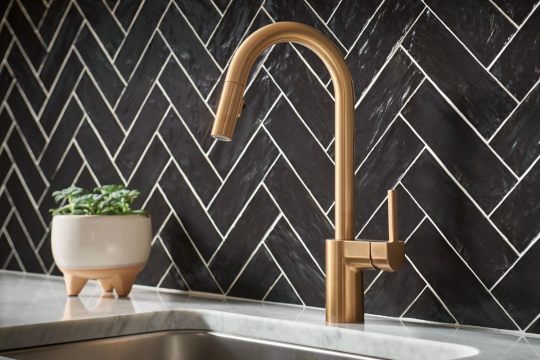


#technology#home & lifestyle#smart home devices#kitchen#decor#kitchen faucet#touchless#moderndesign#hygiene#worth it#productwave
1 note
·
View note
Text
In the fast-paced world of commercial kitchens and food service establishments, staying abreast of the latest trends in technology is critical to enhancing efficiency and delivering top-notch customer experiences. In recent years, the commercial ice machine landscape has witnessed exciting advancements that go beyond just producing ice. Let’s dive into the trends shaping the future of commercial ice machine technology.
0 notes
Text
Last Minute Christmas Gift Ideas
🎁 Elevate your gifting game this Christmas with our curated list! From kid-friendly tech to gourmet cooking essentials, find the perfect present on Amazon. 🌟✨ #LastMinuteGifts #ChristmasJoy #AmazonFinds #GiftIdeas #WizBlog #WisdomandRoyalty
The holiday season is in full swing, and if you find yourself scrambling for the perfect last-minute Christmas gifts, fear not! We’ve curated a list of unique and thoughtful presents that are sure to bring joy to your loved ones. This year, skip the stress and opt for gifts that go beyond the ordinary. And to make your shopping experience even more seamless, we’ve partnered with Amazon to bring…

View On WordPress
#Amazon Christmas deals#Convenient home entertainment solutions#Electric razor grooming#Healthy cooking appliances#Kid-friendly tech gifts#Last-minute Christmas gifts#Motorized projector screen#Portable hot pot cooker#Smart digital photo frame#Sofa caddy organizer#tap into your creativity#Touchless trash can technology#Unique holiday presents#wisdom and royalty#WizBlog
0 notes
Note
Please correct me if I'm wrong, but what I believe OP is referencing that in Fine Arts and other similar 2D drawn/painted/etc arts, the general goal of taking photos is to keep the light as flat as possible so that the photo itself has no change in values aside from the actual ink/paint/etc. I.e. in taking a picture of the Mona Lisa, you generally don't see a cast shadow from, say, a tree branch (ignoring that it's in a museum, of course with minimal lighting for preservation reasons). You don't want to see shadows from where an artist may have pushed down the pencil too hard on the paper, or the crags in oil paintings (typically). It's why scanners got pretty encouraged for high res/no shadows/etc in early online art communities.
However, I would also like OP to check out art from the 60s and 70s I believe, where a lot of artists did play with the reflection of light and shadow in their works, and while a good lot of them are 3D or Installation artists, there are others that working more 2D, and also more contemporary artists that specifically use light and shadow play in their work (I forget the artist's name, but there's one who uses lights to create window glows in his ink and pencil drawings), and how shadow puppetry with flat, hinged cut outs was a very early style in animated films.
So please, play with shadows and light in your flat/drawn artworks if it makes you happy! Art is made to play, and there are some extremely unique ways to incorporate your surroundings into that work. And who knows, you could be the one to start another movement. That flat lighting has its place in college portfolios, but not every piece of art can be so neatly packaged.
Art preservation has two main ways to document fine art. Scanning or photographing.
The standard photographic way is typically to use a very high resolution medium format camera (Usually a Phase One) with a lens with minimal distortion. Two lights are placed on either side of the painting angled at 45 degrees toward the center. And this creates a very evenly lit photograph with minimal shadows. Color charts are placed near the painting in the same light so the photo can be calibrated later on.

For museum quality documentation, this process may be done in a stitched panorama to increase the overall resolution. But there are also pixel shift technologies where the camera can offset the physical sensor by one pixel in any direction to allow capturing maximum detail. A 100 megapixel camera essentially becomes 400 megapixels. It's a very finicky process requiring concrete floors and sturdy mounts (any microscopic movement will ruin the process), but it produces amazing results when captured by an experienced professional.
Scanning is best if the form factor of the artwork allows for it. There are high end "touchless" scanners that run the art through on a conveyor belt system. This also results in a pretty flat looking representation.
youtube
One technique that is becoming popular is 3D microscopy. This allows them to capture the fine texture of the painting. They can also put the painting in any lighting environment after the fact. So you can do shadowless, even lighting or you can do a side light that rakes across the texture, allowing you to see paint cracks and brush strokes more defined.
Here is the Girl with the Pearl Earring's eye catchlight, which apparently is a bit of a glob.

There is a video on this process including a huge 3D print where people can physically experience the texture of the painting.
youtube
And you can check out the 3D scan of the Girl with a Pearl Earring here.
With VR headsets growing in popularity, I imagine these professional tools for creating 3D representations will become more accessible. And people will be able to scan their own art in a similar fashion. Canon is already developing a dual lens system that might be applicable.
19 notes
·
View notes
Text
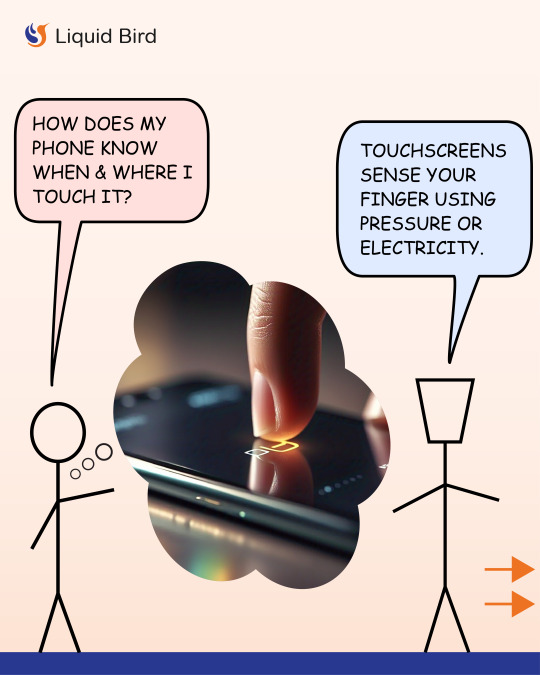

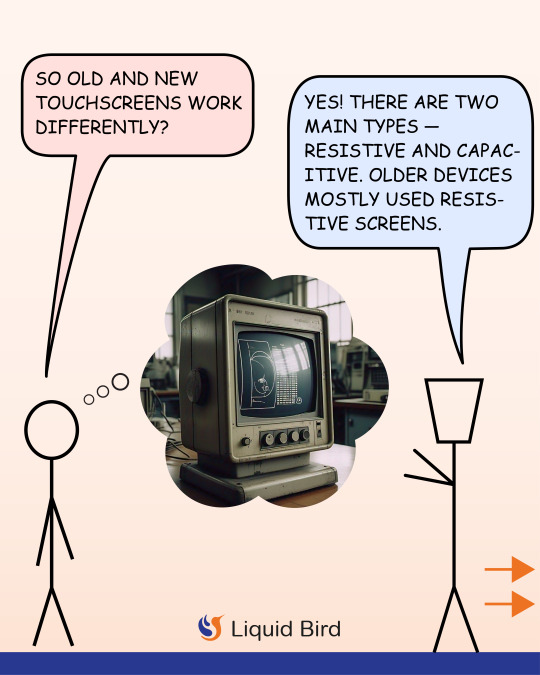
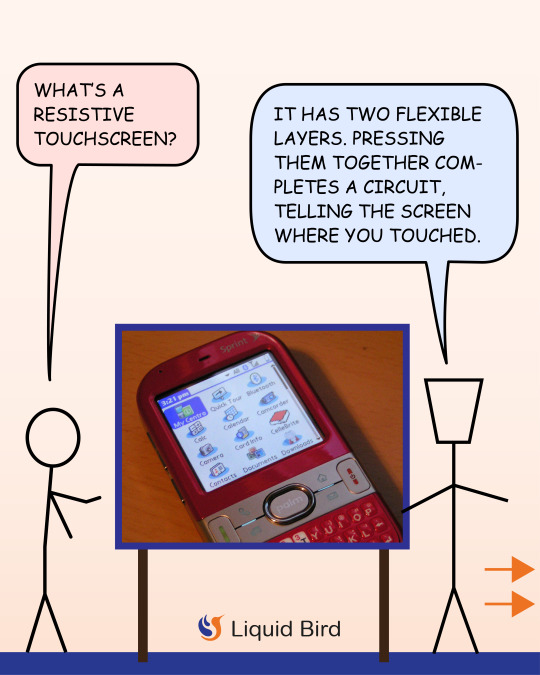
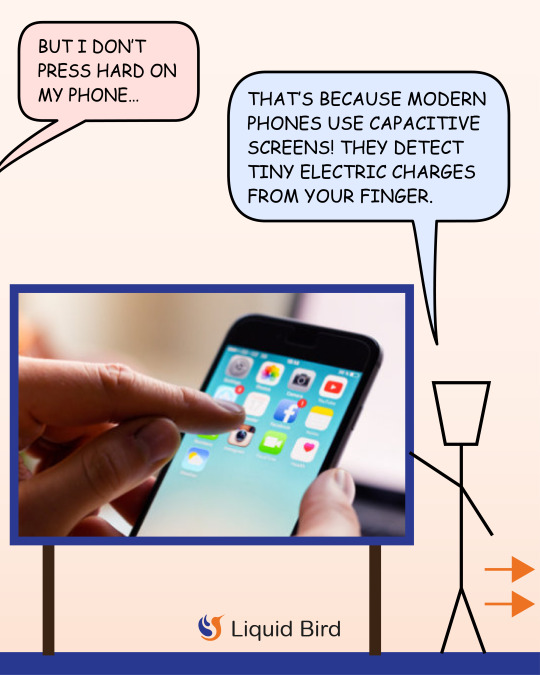

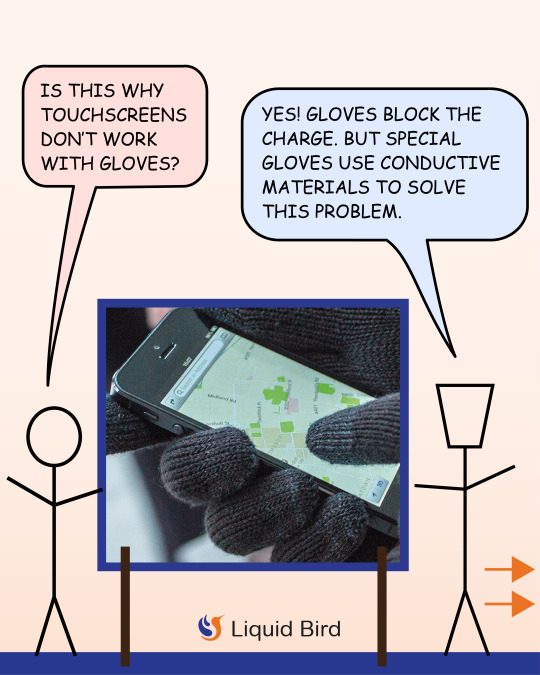
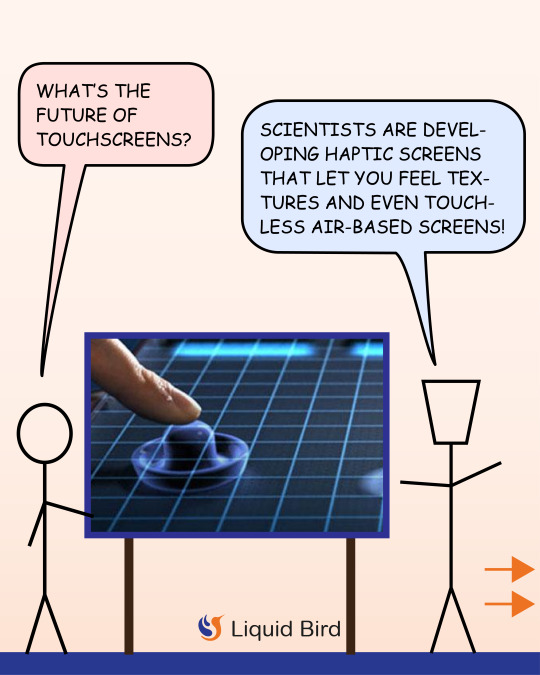
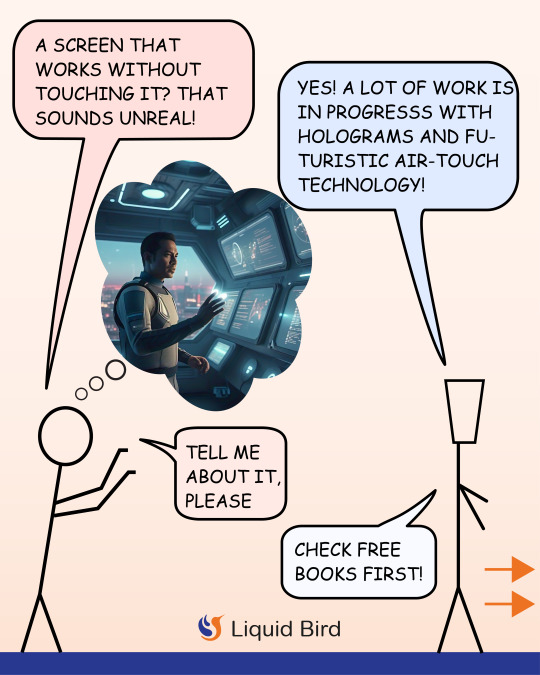

Touchscreens have changed how we interact with devices, from smartphones to ATMs. They work by detecting touch and converting it into a command, replacing buttons and keyboards with a smooth, interactive surface.
The idea of touchscreens dates back to the 1960s, but early versions were bulky and slow. The first real touchscreen device appeared in the 1970s, but it wasn’t until the 2000s that smartphones made them a part of everyday life. Today, they are everywhere, using different technologies to sense touch.
The most common type is the capacitive touchscreen, found in most smartphones and tablets. It works by using a thin layer that holds an electric charge. When you touch the screen, your finger, which conducts electricity, disturbs the charge, and the screen detects the exact point of contact. This type is highly responsive and supports multi-touch, allowing pinch-to-zoom and swipes.
Another type is the resistive touchscreen, used in older devices and some industrial machines. It has two flexible layers with a small gap between them. Pressing the screen makes the layers touch, completing a circuit and sending a signal. These screens work with any object, like a stylus or glove, but they are less responsive and wear out faster.
Advanced touchscreens use infrared grids, ultrasonic waves, or pressure sensors. Some futuristic designs use flexible screens that can bend, while others explore touchless gestures using cameras or AI.
The future of touchscreens includes ultra-thin displays, holographic interfaces, and even touch-sensitive materials on clothes and walls. With ongoing research, touchscreens will keep evolving, making technology feel even more natural.
We hope this brought you some insights into the working of your smartphone screen. 😊
Check, our substack for more in-depth articles on such topics.
#comics#sciencecomics#webcomics#science#stem#educationalcomics#liquidbird#becurious#comicstrips#rockets#space#electronics#aircraft
3 notes
·
View notes
Text
Touchless Foam Dispenser – Automatic, Hygienic & Refillable for Mess-Free Hand Washing
In an age where hygiene and convenience go hand-in-hand, upgrading your soap dispenser isn’t just a luxury—it’s a smart health decision. Whether you’re redesigning your bathroom or modernizing your kitchen, an automatic foam soap dispenser can completely transform your daily routine.
At Nav Emporium, we believe that wellness starts with clean hands. Our top-rated GermFree Touchless Soap Dispenser combines functionality with modern design, making it the ideal touchless foam dispenser for any home or workspace.
Why a Touchless Foam Dispenser is the Future of Hygiene
Unlike traditional pump bottles, a foam dispenser automatic unit uses smart sensor technology to eliminate physical contact. This reduces the spread of germs and provides a cleaner, mess-free experience.
Top Benefits:
✅ Touchless Convenience: Just wave your hand—no button pressing.
✅ Economical Use: Foamed soap means less product wasted.
✅ Kid-Friendly: Encourages children to wash hands properly.
✅ Modern Aesthetic: A sleek design that fits into any decor.
Whether you need a foam handwash dispenser for your master bath, guest restroom, or kitchen, this is one upgrade you’ll wish you had sooner.
Comparing Dispensers: Soap Dispenser vs Foam Dispenser
Understanding the difference between the two is key to making the right purchase.
Feature
Foam Dispenser
Liquid Soap Dispenser
Texture
Pre-foamed, light
Thick liquid
Use
Dispenses soap + air mix
Dispenses only soap
Efficiency
High (uses less soap)
Moderate
Experience
Luxurious, soft lather
Heavier, more residue
Best For
Daily family use
Heavy-duty or industrial use
The automatic foam soap dispenser for bathroom offers more value, especially for families or households concerned with reducing product waste.
Product Highlight: Germ Free Touchless Soap Dispenser
Meet your new hygiene essential: the GermFree Touchless Foam Dispenser. Designed to be functional, efficient, and elegant, it ticks all the right boxes.
Product Features:
Advanced Infrared Sensor: Instant, contact-free activation
USB Rechargeable Battery: Long-lasting power, eco-friendly charging
Refillable Tank: Compatible with all foaming hand soaps or diluted liquids
Water-Resistant Casing: Perfect for wet spaces like bathrooms
Modern Design: Complements marble countertops or wooden vanities alike
Looking for an automatic foam soap dispenser for home that looks great and performs even better? This is it.
How to Refill and Use
You can use any foaming soap or dilute regular liquid soap with water in a 1:4 ratio. Here’s a quick setup guide:
Charge: Connect the USB cable and fully charge the unit.
Dilute: Mix one part soap to four parts water for non-foaming soaps.
Refill: Unscrew the base, pour in the solution, and reattach.
Test: Place your hand near the sensor to ensure the unit dispenses correctly.
That’s it! Your automatic foam soap dispenser touchless is now ready to use.
Smart Placement Ideas for Every Room
Wondering where to use it?
🛁 Bathroom Sink: Replace traditional pump bottles for a clutter-free look.
🍽️ Kitchen Counter: Keep hands clean during food prep.
🏢 Office Pantry: Promote hygiene in shared spaces.
🚪 Entryway: Place near the door for instant sanitizing.
Searching for an automatic foam soap dispenser nearby? Order online at Nav Emporium and enjoy fast delivery.

Real Customer Experiences
See what users say in their touchless foaming soap dispenser reviews:
“★★★★★ My kids actually enjoy washing their hands now. The foam feels nice, and there’s no soap mess.” – Ritu M.
“★★★★★ I've installed one in my kitchen and another in the bathroom. They look great and work perfectly!” – Karan J.
“★★★★★ Really easy to charge and refill. Plus, it uses so little soap that I’m saving money too.” – Ayesha D.
These testimonials make it clear—this is more than just a foam dispenser. It's a lifestyle upgrade.
Tips to Maintain Your Touchless Foam Dispenser
To extend the life of your foam dispenser automatic:
🧼 Weekly Cleaning: Wipe the nozzle with a cloth to prevent buildup.
💧 Check Soap Quality: Only use foaming soap or proper dilution.
🔋 Monitor Battery: Recharge monthly depending on usage.
🛢️ Store Properly: Avoid placing in direct sunlight or under dripping water.
Proper maintenance ensures your automatic foam handwash dispenser continues to perform efficiently every time.

Ideal Gift for Every Occasion
Need a practical, thoughtful gift idea? The GermFree Touchless Dispenser is perfect for:
🎁 Housewarmings 🎁 Holiday Gift Sets 🎁 Baby Showers 🎁 Wedding Registries 🎁 Corporate Gifting
It’s more than a gadget—it’s a wellness essential that shows you care.
Where to Shop More Hygiene Essentials
Want more smart solutions? Explore:
🔗 New Arrivals
🔗 Best Sellers
From innovative kitchen tools to luxury bathroom accessories, Nav Emporium brings curated quality right to your doorstep.
Eco-Conscious and Economical
By choosing a refillable foam dispenser, you’re making a sustainable choice:
♻️ Reduces plastic bottle waste
💧 Uses less soap per wash
⚡ USB charging eliminates disposable batteries
Sustainability meets sophistication in every unit.
Final Thoughts
If you’re still using outdated soap pumps that spill, drip, and harbor bacteria—it’s time to upgrade. The GermFree Touchless Soap Dispenser isn’t just functional. It’s intuitive, hygienic, and visually sleek.
Whether you want to create a spa-like bathroom, a cleaner kitchen, or simply reduce daily mess, a touchless foam dispenser is a worthy investment. And with fast delivery from Nav Emporium, cleanliness is just a click away.
1 note
·
View note
Text
Exploring the Augmented Reality (AR) Beauty Apps Market: Opportunities & Challenges

Surge in Market Value: A Transformative Decade for AR Beauty
The Augmented Reality (AR) Beauty Apps market is undergoing a seismic evolution. Valued at $1.63 billion in 2022, the market is projected to skyrocket to $1,374.15 billion by 2031, marking an unprecedented CAGR of 25.5% from 2024 to 2031. This meteoric rise is catalyzed by exponential advancements in artificial intelligence, real-time rendering, and shifting consumer preferences toward digital-first beauty experiences.
Request Sample Report PDF (including TOC, Graphs & Tables): https://www.statsandresearch.com/request-sample/40420-global-augmented-reality-ar-beauty-apps-market
AR Beauty Technologies: Driving the Digital Makeover
Facial Recognition and Real-Time Rendering
We are witnessing the integration of high-precision facial recognition systems that map 70+ facial points with sub-millimeter accuracy. These systems allow AR beauty apps to deliver hyper-realistic makeup overlays that adapt in real-time to user movements and lighting conditions.
Artificial Intelligence and Deep Learning
AI engines process vast datasets of skin tones, facial geometries, and makeup preferences. Using machine learning algorithms, these platforms now offer ultra-personalized product recommendations and predictive beauty insights—tailored to each user’s facial structure and historical interactions.
3D Visualization and Motion Tracking
Modern apps leverage volumetric rendering to generate three-dimensional previews of cosmetic products. Whether it's lipstick, contour, or eye shadow, users experience lifelike textures and reflections. Combined with real-time motion tracking, the application remains stable even during head tilts or rapid movements.
Get up to 30%-40% Discount: https://www.statsandresearch.com/check-discount/40420-global-augmented-reality-ar-beauty-apps-market
Multiplatform Deployment: A Seamless User Journey
Mobile Applications
Smartphones dominate AR beauty usage. With high-resolution front cameras and ARKit/ARCore frameworks, iOS and Android platforms host robust apps offering on-the-go cosmetic try-ons, skincare diagnostics, and video tutorials.
Web-Based Interfaces
Browser-based AR solutions extend accessibility. These platforms eliminate app downloads, integrate seamlessly with e-commerce websites, and support virtual try-before-you-buy models that increase conversion rates and reduce return rates.
In-Store Kiosks
Brick-and-mortar retail is rebounding with interactive AR kiosks. Equipped with high-speed processors and depth-sensing cameras, these installations offer hands-free, touchless product experimentation in real time—enhancing shopper engagement and lifting average basket sizes.
Business Model Diversification: Monetizing AR Experiences
Subscription-Based Access
High-fidelity AR experiences are often gated behind monthly or annual subscriptions, targeting beauty enthusiasts seeking advanced features such as real-time tutorials, unlimited try-ons, and cloud storage of makeup preferences.
Freemium Structures
A significant portion of apps employ a freemium model, drawing in users with basic features and monetizing through premium upgrades, ad placements, and branded filters.
One-Time Purchase and Licensing
Professional tools for makeup artists or retail businesses may adopt lifetime licenses, offering a full suite of features for a one-time fee. These are often coupled with SDK/API integration for businesses looking to embed AR into their native platforms.
Integration Channels: Amplifying Reach and Engagement
Standalone Applications
These operate independently with a dedicated UI/UX, ideal for brands wanting full control over customer experience and analytics. They also serve as sandbox environments for testing AR innovations.
Embedded Systems and SDKs
AR engines are increasingly white-labeled and embedded into existing beauty brand apps and e-commerce platforms. This approach accelerates go-to-market timeframes and ensures branding consistency.
Social Media Synergy
Platforms like Instagram, TikTok, and Snapchat are key drivers of AR beauty trends. By allowing users to share their AR-enhanced looks, these integrations generate viral brand exposure, increase engagement, and fuel organic traffic.
Applications of AR Beauty Apps
Virtual Try-On
Consumers can explore thousands of makeup variations—lipstick shades, eyeliners, foundations—without physical application. This functionality increases consumer confidence and drastically reduces product returns.
Skincare Diagnostics
AR apps now analyze skin hydration, pore visibility, wrinkles, and redness in real time. They offer dermatologist-grade assessments, followed by AI-generated skincare routines tailored to each individual.
Interactive Tutorials
Step-by-step makeup guides are displayed directly on the user’s face via AR. This "in-mirror coaching" system significantly improves product usability and educates users on proper application techniques.
Target End-Users: Personal and Commercial Impact
Individual Consumers
Millennials and Gen Z constitute the majority of users, drawn by instant gratification, gamified beauty trials, and influencer-backed trends. Apps build loyalty through personalized content, daily tips, and social integrations.
Beauty Professionals
Makeup artists and dermatologists use AR to demonstrate techniques, run diagnostics, and recommend regimens during virtual consultations, thus extending their services digitally.
Retailers and Brands
Companies integrate AR to reduce decision paralysis, boost upsell opportunities, and provide immersive omnichannel experiences—combining online precision with in-store delight.
Key Players in the Global Augmented Reality Beauty Apps Market
ModiFace (L’Oréal)
Perfect Corp. (YouCam Makeup)
Meitu
FaceCake Marketing Technologies
GlamScout
Visage Technologies
Avon Virtual Beauty
Mary Kay MirrorMe
Parfait
These companies continue to innovate through proprietary algorithms, strategic acquisitions, and developer ecosystems that expand AR's scope beyond beauty.
Regional Insights: Augmented Reality Beauty Apps Market Penetration and Demand Trends
North America
A mature market marked by early adoption and heavy investment in AR R&D. The United States leads in app downloads and revenue generation, driven by tech-savvy consumers and influencer-driven e-commerce.
Asia-Pacific
Home to beauty giants like Korea and Japan, this region exhibits hyper-personalized beauty standards and fast-growing smartphone penetration. Localization and cultural sensitivity are vital for success here.
Europe
Demand is fueled by sustainability-conscious consumers. AR reduces product wastage and supports clean beauty movements, aligning with EU environmental mandates.
Middle East, Africa, and South America
Emerging markets show immense potential with rising disposable incomes and expanding mobile internet access. Localized beauty filters and regional brand partnerships are proving effective.
Augmented Reality Beauty Apps Market Forecast Outlook (2024–2031)
Revenue Growth: Sustained double-digit CAGR through 2031.
Technology Evolution: Widespread adoption of AI skin tone calibration, gesture-based UI, and blockchain-backed product authenticity.
Consumer Behavior: Shift from aspirational beauty to data-backed skincare and wellness applications.
Retail Transformation: Full AR integration in both online and offline channels becoming the norm.
Strategic Recommendations
Invest in AI & ML capabilities to improve personalization.
Expand SDK offerings for seamless integration with partner platforms.
Leverage user-generated content on social media to drive virality.
Localize UI/UX based on regional beauty standards and languages.
Collaborate with dermatologists to validate skincare diagnostics.
Purchase Exclusive Report: https://www.statsandresearch.com/enquire-before/40420-global-augmented-reality-ar-beauty-apps-market
Final Augmented Reality Beauty Apps Market Insights
Augmented Reality is no longer a novelty in the beauty sector—it is the cornerstone of next-generation customer experience. Brands that invest early, personalize aggressively, and deploy across all touchpoints will be best positioned to dominate the AR beauty revolution.
By staying ahead of emerging technologies and consumer expectations, we can lead the charge in shaping a multi-billion dollar future for AR in beauty.
Our Services:
On-Demand Reports: https://www.statsandresearch.com/on-demand-reports
Subscription Plans: https://www.statsandresearch.com/subscription-plans
Consulting Services: https://www.statsandresearch.com/consulting-services
ESG Solutions: https://www.statsandresearch.com/esg-solutions
Contact Us:
Stats and Research
Email: [email protected]
Phone: +91 8530698844
Website: https://www.statsandresearch.com
1 note
·
View note
Text
Future Innovations in Restroom Cubicles: What to Expect Next

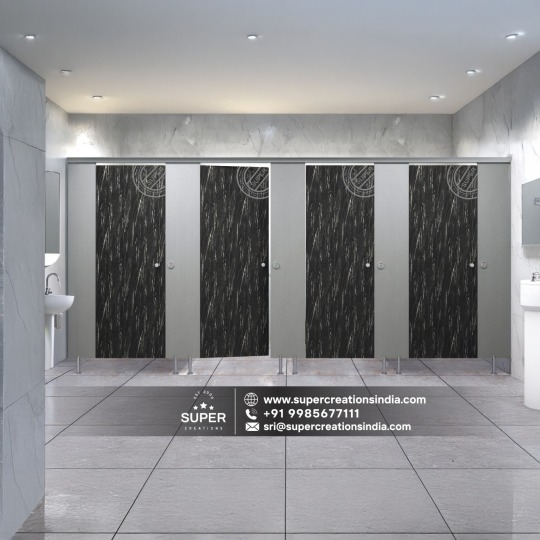
The future of restroom cubicles is fast changing, with developments aimed at increasing user experience, sustainability, and functionality. New technologies are changing the way we think about restroom design, from touchless fixtures and smart sensors to innovative lighting systems that save energy. New materials are also playing an important role, with environmentally friendly solutions such as recycled and sustainable materials providing a greener alternative without sacrificing durability. Furthermore, designs are becoming more inclusive, with features that cater to a broader range of accessibility needs, ensuring that restrooms are usable by all. As businesses and organizations strive to create more sanitary, efficient, and comfortable environments, future restroom cubicles will integrate smarter technologies, better materials, and sleek, modern aesthetics. This essay delves into the intriguing developments shaping the next generation of restroom cubicles, offering insights into the innovations that will define the spaces of tomorrow. for more details visit :- https://supercreationsindia.com/
#washroom partitions#washroom cubicles#toilet partitions#toilet cubicles#restroom cubicles#restroom partitions#super creations#architecture
2 notes
·
View notes
Text
The Impact of Restroom Cubicles on Workplace Comfort and Productivity
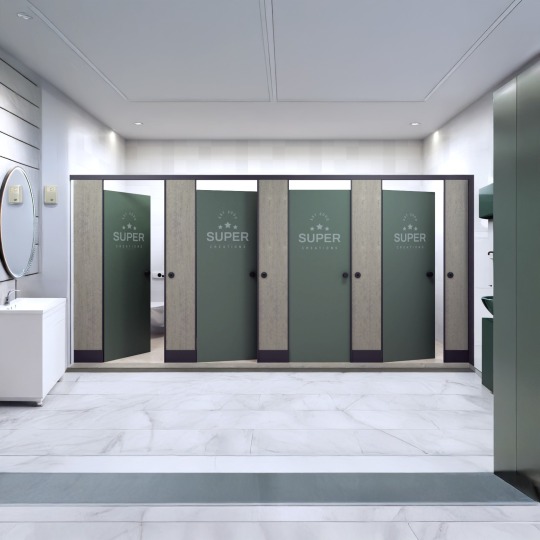

The quality of toilet facilities has a significant impact on employee satisfaction and workplace productivity. This article investigates how modern restroom cubicles can be constructed to improve the workplace, resulting in a more positive, comfortable, and productive culture for employees. With a focus on ergonomics and hygiene, we explain how intelligent restroom design may have a long-term impact on employee morale, making them feel valued and supported in their daily tasks. By examining case studies and real-world examples, we demonstrate how firms in a variety of industries are investing in high-quality restroom cubicles to promote employee well-being. These investments frequently focus on ergonomic designs, such as larger cubicles, higher-quality materials, and user-friendly features that improve restroom comfort and efficiency. Additionally, enhanced hygiene standards, including touchless technology, antimicrobial surfaces, and efficient ventilation, play a crucial role in reducing illness and maintaining a clean and healthy environment. for more details visit :- https://supercreationsindia.com/
#toilet cubicles#toilet partitions#architecture#design#restroom partitions#exteriors#interiors#super creations#construction#washroom partitions
2 notes
·
View notes
Text
How to ensure your kitchen remodel adds value to your home


A well-planned kitchen remodel can significantly boost your home’s value, making it one of the best investments for homeowners. However, achieving a return on this investment requires thoughtful planning and smart choices. Here are some expert tips to ensure your kitchen remodel adds value to your home.
1. Layout and flow
Efficient flow ensures your kitchen is easy to navigate and enjoyable to use, which buyers find appealing. Aim for the "work triangle" rule, where the fridge, stove, and sink are easily accessible to one another. A functional layout also makes cooking and cleaning easier, adding practical value to the space.
2. Invest in quality materials
Quality materials not only look better but also last longer. Focus on durable countertops, solid cabinetry, and high-grade flooring. Engineered quartz countertops, for example, are both resilient and stylish, while soft-close cabinets bring that premium touch that buyers appreciate.
3. Focus on energy efficiency
Energy-efficient appliances and lighting appeal to environmentally-conscious buyers and help lower utility bills. Choose appliances with ENERGY STAR ratings, and consider installing LED lighting throughout the space.
4. Choose neutral, timeless design elements
Trendy designs date quickly. Choose neutral colours - whites, greys, or beiges - which have broad appeal and allow future homeowners to envision the space as their own. Timeless materials like subway tiles or classic shaker cabinets can ensure the kitchen feels stylish for years to come.
5. Add ample storage
Buyers love storage, especially in the kitchen. Consider pull-out shelves, deep drawers for pots and pans, and built-in solutions for maximum efficiency. Kitchen islands with built-in storage are a great way to add space without compromising on style.
6. Improve lighting
Lighting can dramatically change the feel of a kitchen. Ensure there’s a combination of task lighting, ambient lighting, and accent lighting to create a welcoming, functional space. Under-cabinet lighting can make food prep easier, while pendant lights over an island add a designer touch.
7. Smart kitchens
Modern buyers appreciate technology. Consider adding a few smart kitchen features. Touchless faucets, smart lighting and WiFi-enabled appliances make the kitchen feel more contemporary. These additions are relatively low-cost and enhance the appeal.
Are you considering a refurb? Chat to General Refurbs, London’s trusted refurbishment company. General Refurbs is a specialist, multi trade team with over 15 years’ experience covering a range of renovation and contracting services, including plumbing and electrical, windows and door installations, bathroom and kitchen design and installation, roofing, flooring and decorating.
With a focus on quality materials and craftsmanship, and ensuring a seamless customer journey, we bring years of expertise to each project, offering tailored solutions that combine functionality with style. We don’t just do one job, we build lasting relationships and our customers return time and again. Work with us and you will see why!
For a free quote, or to discuss your ideas, please contact us—we’d love to help make your dream space a reality. [email protected]
#kitchen#home improvement#property refurbishment#handyman#bathroom#generalrefurbs#decorating#kitchendesign#refit#refurbslondon#londonrefit#diy#multitrade
2 notes
·
View notes
Text
6 Kitchen design Ideas For 2025 That will completely Transform your kitchen into a center of attraction
What satisfies your craving? ‘Kitchen right”. To some, it’s more than a room. It unites family. For others, it’s the heart of their home. A room with so many memories. It enables the growth of family ties. It offers each person shared joy and appreciation. to Us, it’s akin to the heart of a home.
The New Colors Palette that will dominate the coming year
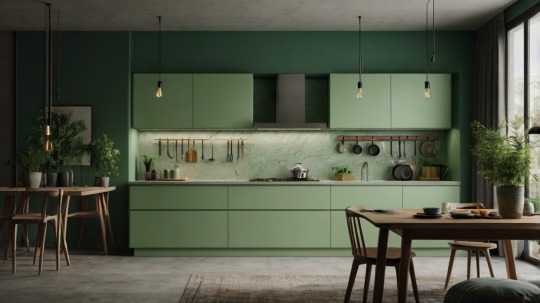
Now Color is the most important aspect of interior designing and that is why it should be your priority, the new color that is catching all the light is Green color and there are multiple reasons for that
1st — It soothes your eyes, and creates a tranquil environment
2nd — blend with the environment easily and give a fresh look to your kitchen
3rd — because of the massive urbanization people are looking for the environment-friendly designs
i) Muted & soft Shades
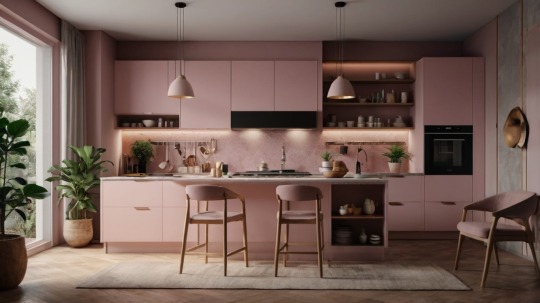

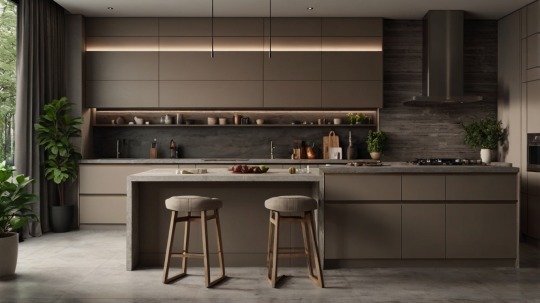
Colors like light pink, light red & taupe color = these colors have some sort of symphony they have an earthy touch
ii) The Deeper Tones
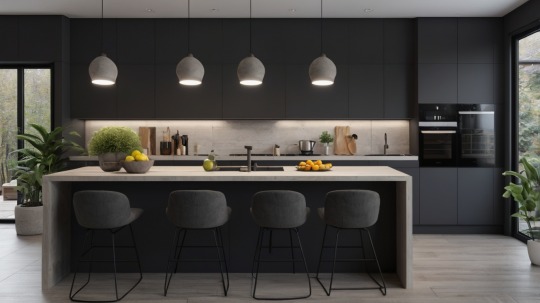
Apart from the lighter hues like light gray, dark gray, anthracite are gaining traction
2. Natural and ambient lighting
Now we will focus on the next important part — lighting- the type of color you are going to use will heavily influence the kitchen’s lighting. back in the old days when kitchens were tucked away separately, and used to rely on artificial lights. But now we are seeing more and more use of incorporated kitchens. But why is this design on the rise?

i) open kitchens are functional and spacious.
ii) It brings more light.
Heading into 2025, natural light is gaining more attention. Following this trend, modern designs add large windows for plenty of sunshine.and Smartly placed lights, like those under cabinets, pendant lights, and built-in ceiling lights,create a kitchen that feels snug and looks pleasing.
3. Biophilic Design Features. We’ve talked about color and light before. But for this combo to truly shine, we need one more thing. That’s the treasures of our world — Plants. It’s common knowledge that these leafy wonders hold immense value; they are the beating pulse of our world. So, here’s your guide on gifting your kitchen a touch of green.
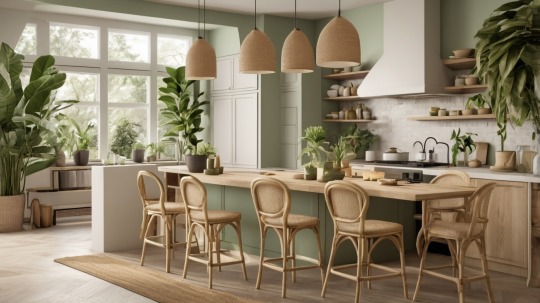
Plants and Green Walls: Think about adding Aloe Vera, Peace Lily, or Pothos. Maybe even Basil, different Herbs, ZZ Plant, Snake Plant, or Lucky Bamboo to jazz up your kitchen. Add what you like. Also, using a light green color scheme can improve how your kitchen looks.
Nature-inspired elements: Include more materials like jute, rattan, and cane in your decor and furniture. This will match your kitchen’s style.
4. Green Materials and Finishes:

Earth-friendly Options: Bamboo, Teak, and recycled metal are trending. They’re sourced responsibly and recycled. Quartzite and marble are top picks in natural stones. Semi-precious stones are making a big splash in kitchen decor. Matte & Natural Finishes: Folks adore matte surfaces and natural wood. They offer a rustic, unassuming look.
5. Open and Adaptable Designs: This style brings space and usefulness to your home. No wonder it’s the latest craze this allows homeowners to display stylish kitchenware, it also adds personality to your kitchen. the glass — front cabinets are also on trend, this showcases the beautiful kitchen cabinet and shelves
Multi-Functional Islands: You can also opt for multifunctional islands as they enhance the layout.
6. Smart Appliances — with AI technology
Our World is Inundated with AI technology and we all know that this is our future. now smart kitchen appliances are on the rise, like refrigerator with AI that will detect the quality of food automatically adjust the temperature, and smart multi-functional sinks. Appliances that can be controlled via remote like smart ovens and voice-controlled devices and touchless faucets these smart technologies are must have addition.
For more helpful tips and information, click the Here to read additional blog posts.
2 notes
·
View notes
Text
5 Key Features of Contemporary Elevator Lobby Design

A modern elevator lobby design goes beyond connecting floors; it defines the character and functionality of a building. To create a space that stands out, focus on elements that merge style, comfort, and practicality. Lighting plays a crucial role in setting the ambiance, with layered illumination using LED accents or pendant lights to highlight architectural features and create a welcoming atmosphere. Flooring is another essential feature—durable, slip-resistant materials like marble, tiles, or high-quality vinyl offer both safety and sophistication.
Wall treatments are an opportunity to make a statement. Modern designs often incorporate textured panels, sustainable materials, or even digital displays to elevate the space's aesthetic appeal. Wayfinding elements, such as streamlined signage and intuitive layouts, ensure ease of navigation, especially in high-traffic areas. Technology integration takes the space to the next level. Touchless panels, interactive kiosks, and smart lighting systems not only enhance convenience but also future-proof the lobby.
A well-thought-out lift lobby design creates an inviting first impression while meeting the practical needs of users. At Premier Elevator Cabs, we understand the importance of combining form and function to deliver lobby spaces that reflect the essence of your building. If you’re ready to transform your elevator lobby, our team is here to bring your vision to life. Read the blog for more information: https://www.premierelevatorcabs.com/5-elements-of-modern-elevator-lobby-design/
#elevator service#lift lobby wall design#lift lobby design#modern elevator interiors#elevator design interior
1 note
·
View note